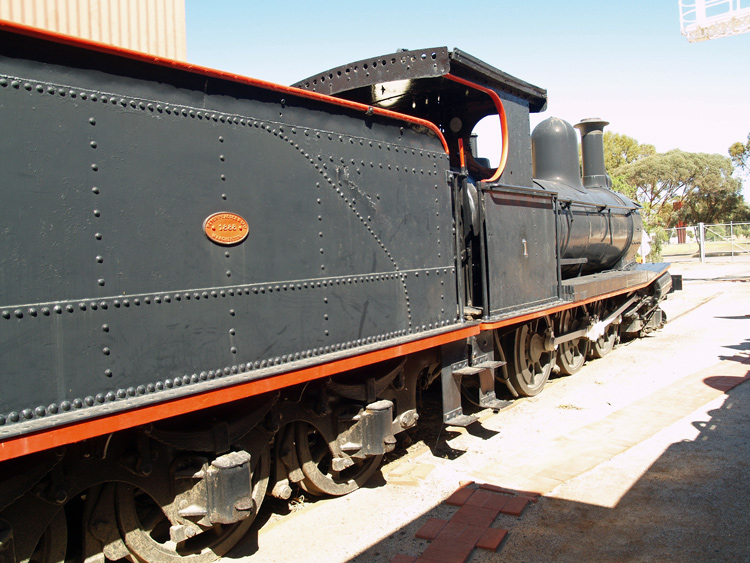
|
Silverton Tramway Co. Y 1 First of the Silverton Tramway's Y-class locomotives |

Y 1 displayed at the excellent Sulphide St Station Museum, Broken Hill on 18 April 2014.
|
The discovery of rich silver, lead and zinc ores at Broken Hill in the far west of NSW led to demands for a railway link to support the mining and smelting operations underway. The South Australian Railways extended their 3' 6" gauge railway to the NSW border at Cockburn, however the NSW Government declined to build a 3' 6" gauge connector for the additional 56km to Broken Hill. The private Silverton Tramway Company was formed to fill this gap and constructed a railway from Broken Hill to Cockburn via Silverton. While called a tramway for legal reasons, the Silverton Tramway was in fact a heavy-haul railway. A lengthy branch line known as the Tarrawingee Tramway was also constructed to supply limestone to the smelters at Broken Hill. The Silverton Tramway Co. initially hired a number of South Australian Railway's Y-class 2-6-0 locomotives to operate their line. Presumably happy with the performance of these locomotives, the company directors took the pragmatic decision to order copies of these locomotives from Beyer Peacock & Co, Manchester. Indeed the Silverton Tramway Co. locomotives were also known as the Y-class. The Silverton Tramway came to own 21 locomotives of this type, including 2 examples of the 2-6-2T variety, although a maximum of 17 were owned at any one time and hence they carried road numbers Y 1 to Y 17. The Y-class 2-6-0 locomotives were superceded in main line duties by the A-class 4-6-0's from 1912 onwards, but many were retained for shunting and secondary duties around the Broken Hill yards and mine sidings. Preserved locomotive Y 1 was the class leader of the Silverton Tramway's Y-class locomotives, built by Beyer Peacock & Co in 1888 as their builder's number 2971. It was withdrawn from shunting duties in 1960 and saved for preservation, being originally displayed at Railwaytown on the site of the Silverton Tramway's main shunting yards, loco shed and workshops. Y 1 was later relocated to the excellent Sulphide St Railway & Historical Museum, Broken Hill (based on the Silverton Tramway's former station at Sulphide St) where it is displayed together with W 25, T 181 and a range of railway, mineral and regional history exhibits. Shown on this page are various views of Y 1 following my most enjoyable visit to the excellent Sulphide St Railway & Historical Museum on 18 April 2014. |
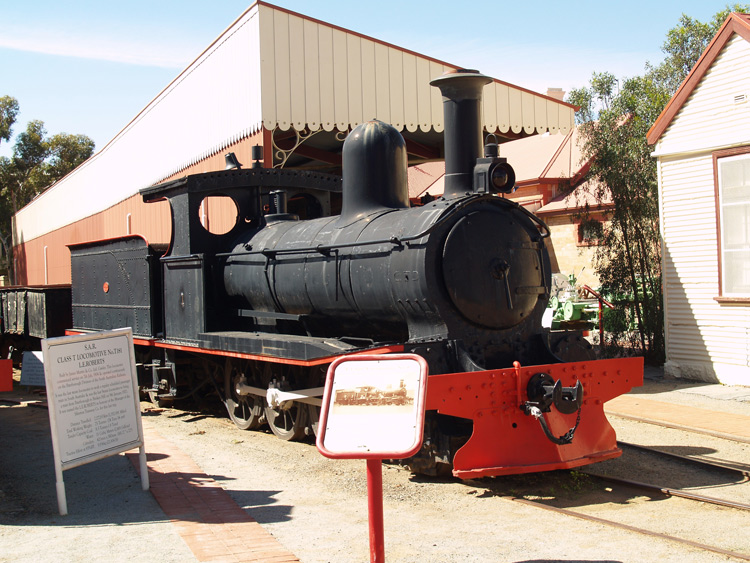
Y 1 displayed at the Sulphide St Station Museum on 18 April 2014.
The Silverton Tramway's Y-class locomotives were modified by the addition of lead weights to increase traction;
these can be seen on the running board above the driving wheels.
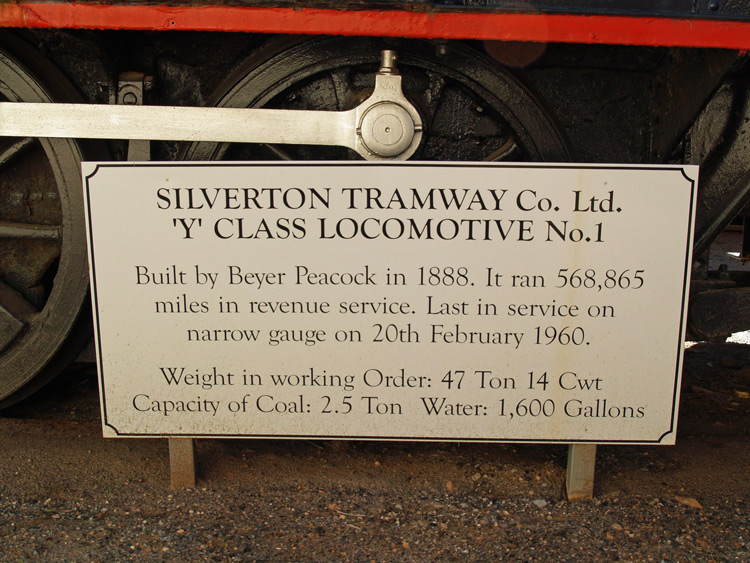
Information board
displayed alongside Y 1 at the Sulphide St Station Museum.

Beyer Peacock & Co Ltd
builder's plates attached to the side of Y 1's tender.
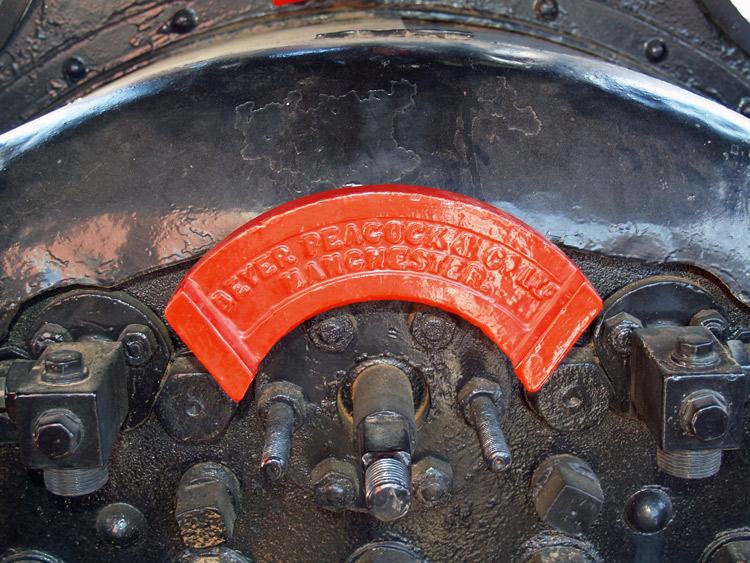
Y 1's regulator handle is missing, revealing this Beyer Peacock & Co regulator guide attached to the backhead.

This display signage provides a brief history for Y 1.
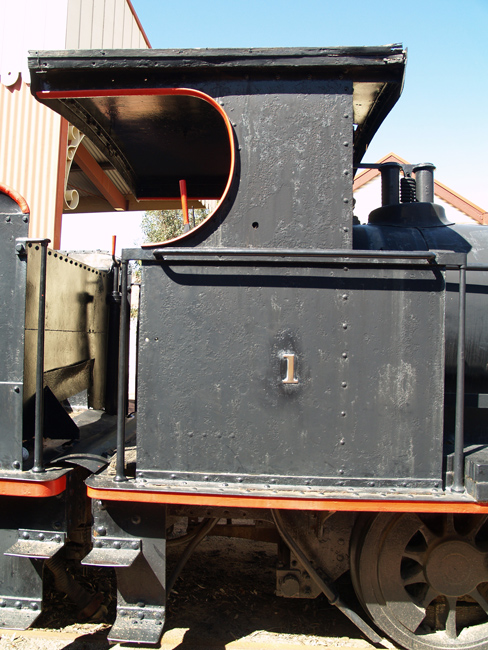
Y 1 cabside and brass number.
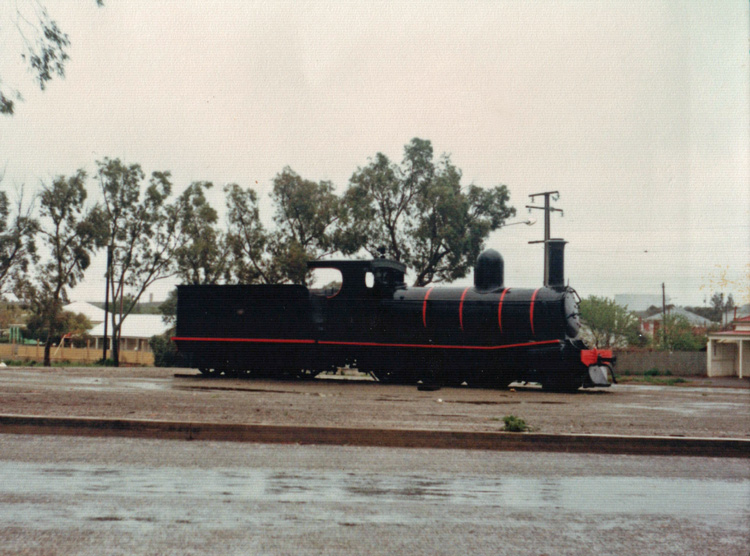
I first encountered Y 1 on a rainy day in Broken Hill around 1979.
It was displayed at Railwaytown at the site of the Silverton Tramway's main shunting yards, loco shed and workshops.
The Railwaytown site has since been redeveloped as a supermarket, with Y 1 relocated to the Sulphide St Station Museum.

Y 1 is displayed at Sulphide St heading a string of Silverton Tramway Co. 4-wheel ore wagons.
Behind is a delightful 4-wheel passenger carriage originally used on the Tarrawingee Tramway.
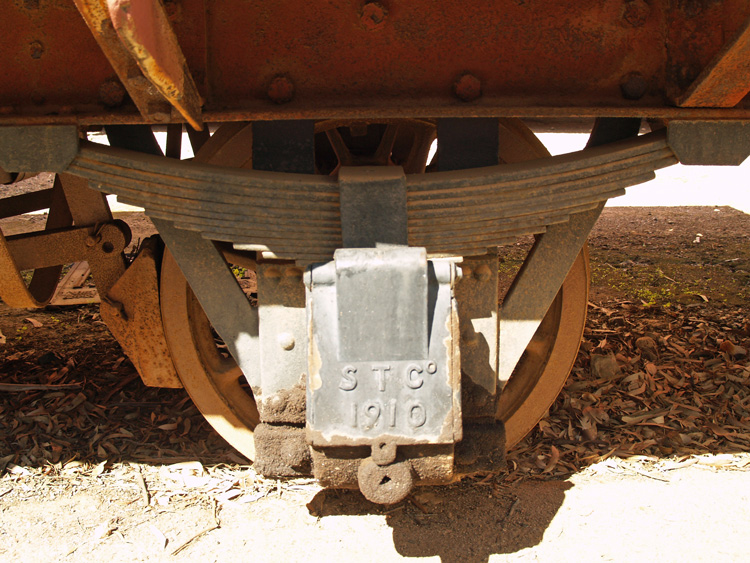
A Silverton Tramway Co. axlebox cover on one of their 4-wheel wagons.
References
|
a |
Fluck R. E., Sampson R., & Bird K. J. 'Steam locomotives and Railcars of the South Australian Railways', published by The Mile End Railway Museum (SA) Inc, 1986. |
|
b |
Webmaster's observation or comment. |
Page updated: 8 August 2014